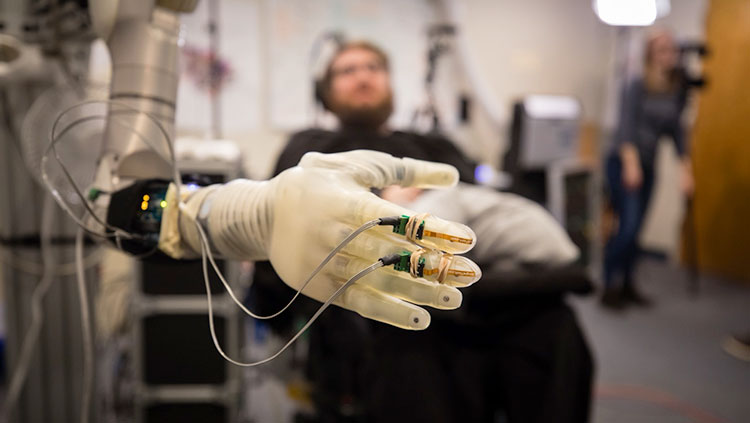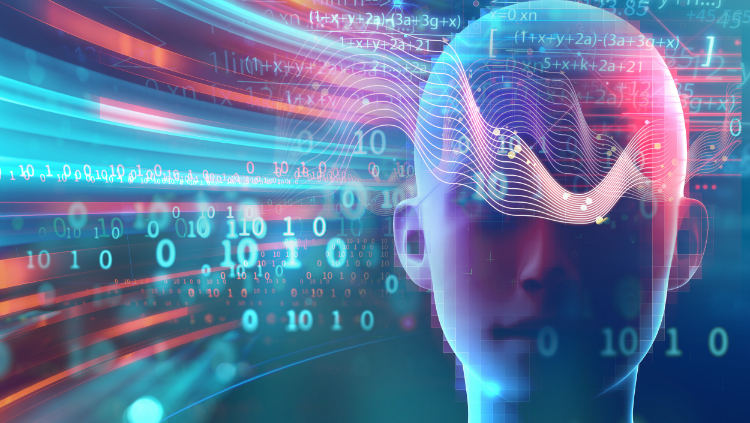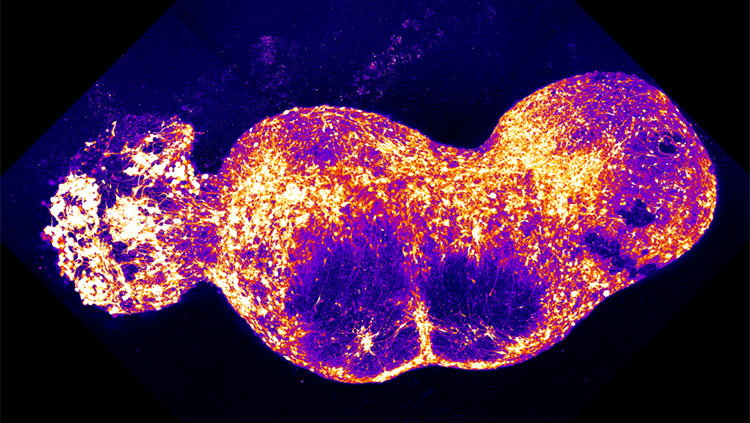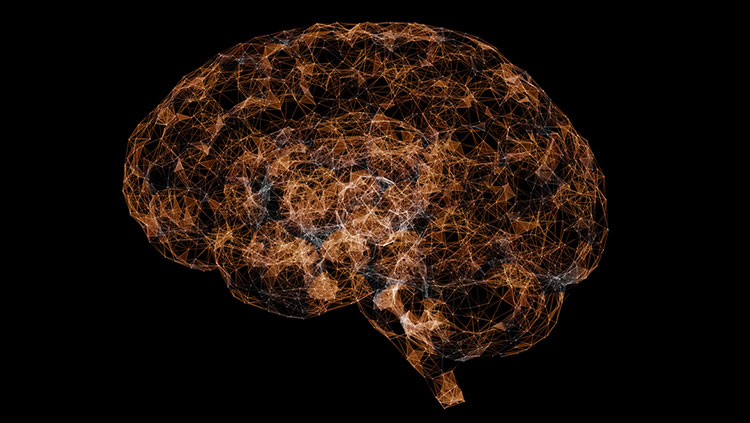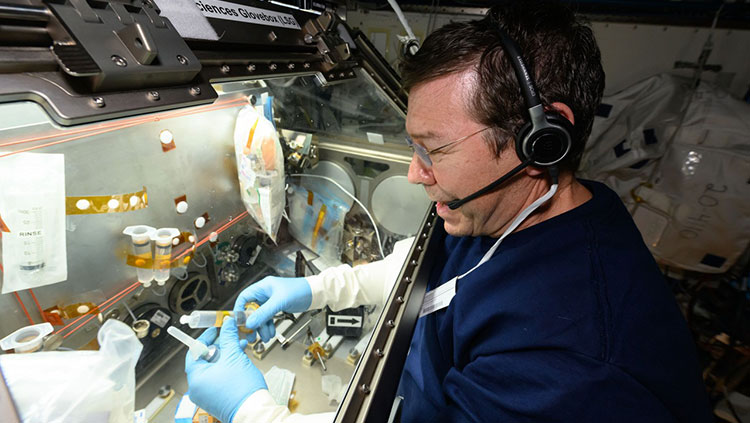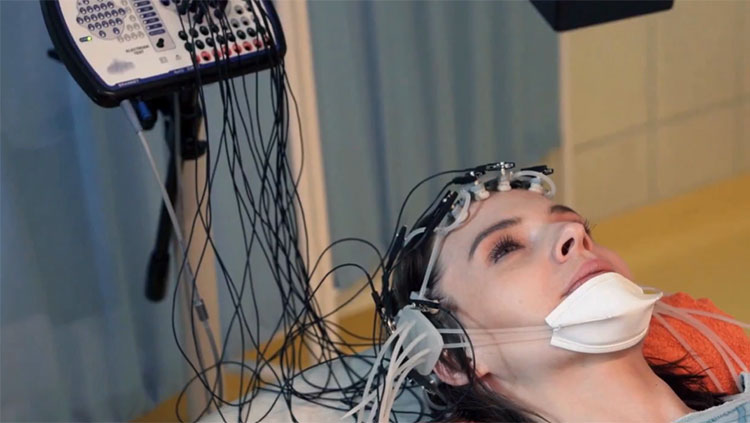Neuroscientists and science educators gathered during the Brain Awareness Campaign Event: Understanding the Impact of Neuroscience Outreach at Neuroscience 2023 to celebrate neuroscience outreach efforts around the world.
In this video, keynote event speaker Manuella Oliveira Yassa, director of outreach and education at the University of California, Irvine (UCI)’s Center for the Neurobiology of Learning and Memory (CNLM), discusses her experience implementing neuroscience education and outreach programs across communities. Oliveira Yassa illustrates how accounting for people’s relationships between their society and ecosystem can provide insights to improve existing outreach programs and design new ones.
CONTENT PROVIDED BY
BrainFacts/SfN
Transcript
DAMIEN FAIR:
Good afternoon and welcome to the 2023 Brain Awareness Campaign Event: Understanding the Impact of Neuroscience Outreach. I'm Damien Fair, committee chair of the Public Education and Communication Committee at SfN, and I'm delighted to celebrate your outreach efforts this year. Now, I'd like to introduce our keynote speaker, Dr. Manuella Oliveira Yassa.
Dr. Oliveira Yassa earned her bachelor's degree in neuroscience from Johns Hopkins University and her master's degree, and her Ph.D. just this week [cheers], in neuroscience education from UC Irvine. She has over a decade of experience in designing, implementing, and evaluating evidence-based outcomes, driven graduate and undergraduate education, as well as community engagement programs at major academic institutions.
She has served as director of outreach and education at UC Irvine Center for Neurobiology of Learning and Memory since 2016. Her scholarly work focused on factors that influence interest, achievement, and persistence in STEM, as well as the impact that university-community partnerships can have on the diversity of the STEM pipeline and workforce. Dr. Oliveira Yassa directs several federally funded neuroscience education and training programs focused on scholars from minoritized backgrounds, including NIH Science Education Partnership Award (SEPA) grant program for high school students, NSF REU Program for undergraduates, and an NIH T32 training program for Ph.D. students. Are you looking for a job? Once again, join me in welcoming Dr. Manuella Oliveira Yassa.
MANUELLA OLIVEIRA YASSA:
Alright. Hello, everyone. It's so nice to see you. Thank you, Damien, for the very kind and generous introduction. I don't think there's anything else that I need to say. And thank you to the SfN Public Education and Communication Committee for putting together this incredible event and to the entire SfN leadership.
I think we owe them all a round of applause. I can't imagine the amount of time that it takes to put something like this together. Lisa and Hope, with whom I have most closely interacted in preparation for today, thank you for all of your work -- I'm sure, months and years of work putting this together.
So, as I thought about what I wanted to share with you today, I struggled a little bit because you are such an incredibly diverse community that brings such strengths, and experiences, and perspectives from so many different areas. And as I started to think about what it is that I take when I leave this event and when I leave this conference every year, I started to realize that really, more than perhaps content and new methods, what I really take is relationships, right? It's meeting people, it's learning about people's paths. And so today, what I thought I would do is tell you a little bit about my path -- my path to discovery -- and in hopes that it will resonate with some of you and perhaps spark some relationships.
So, I started my path in higher education at Johns Hopkins University, like Damien said, as a first-generation college student navigating the world of academia and neuroscience in this major research institution, as one of the only first-generation college students at the time at Hopkins.
And I had lots of opportunities to participate in undergraduate neuroscience research. And I did so with great enthusiasm. I didn't, however, find community in the neuroscience lab. Where I did find community, was with Dr. Linda Gorman, who was a neuroscience professor at Hopkins and was also building a program at Hopkins to bring neuroscience to Baltimore City, and in particular to Baltimore City Public Schools.
And so I started spending a lot of time with Dr. Gorman, both learning neuroscience from her in the classroom and in the lab, and at the same time teaching neuroscience to youth in Baltimore City. And when I graduated from Hopkins, I didn't yet know what I wanted to do and so I applied to participate in the Baltimore City teaching residency, which is kind of like Teach for America, but specific to Baltimore City.
And that landed me in my very own seventh grade Baltimore City classroom. And I walked in with all of the confidence. I had a degree from Hopkins in science after all, right? I knew the science, and I felt like I had some skills with people. And I just walked in with all of the confidence. And I really thought that I was going to be able to impact the lives of the individuals in my classroom.
And it didn't take me long for me to realize that there were a lot of factors outside of my classroom and outside of my control that were influencing the students in my classroom. And I started to think more broadly about neuroscience education in this country and about the factors that influence student interest, and persistence, and achievement in— in science. And with a particular focus on individuals from minoritized backgrounds.
My career at this point took a turn to the West Coast, back to the West Coast, where I had the opportunity to launch and lead the UC Irvine Center for the Neurobiology of Learning and Memory’s Office of Outreach and Education. There, I had the opportunity to build lots of programs.
So, I started building programs, all kinds of different programs. I built programs for little kids, and I built programs for high schoolers, and I built programs for older adults, and for undergraduate students, and for graduate students — I was building programs all over the place. And I was building short programs and long programs, programs at the university and in the community. Everything, I was doing.
And as I was doing these, creating these programs, I tried as much as I could to center best practices to the extent that best practices were published at the time, which you all know is something that we are still struggling with.
And I felt in my gut that these programs were having an impact on the individuals who were participating in them. Right? People would come in, they would smile, they would come back to my programs. Right? And I felt like, okay, this is— this is good. But I had no evidence. I had no evidence to tell me what kind of impact this program, these programs, were having on the individuals who were participating in them.
And the scientist in me really wanted evidence and craved it. The problem is, while I knew how to genotype a mouse, and I could extract the hippocampus, maybe even from the mouse's brain, I had no idea how to approach understanding the impact of a program like this. Right? There were all these moving parts, and there were humans behaving, and they weren't even behaving in the lab. They were behaving in real life, and it was just a lot.
So, I had no idea where to start. And so, in my mid-thirties, and with two preteen daughters, I decided to enroll in a Ph.D. program in the UCI School of Social Ecology. This program was really unique because it allowed me to center a societal problem and take a transdisciplinary approach to this problem.
And so the problem that I centered was diversity in science. And I wanted, in particular, to understand how programs at universities and university-community partnerships could influence and impact this problem that we had, which is, of course, where the people who do science today, right, the composition of the people who do science today doesn't reflect the composition and the diversity of our society.
And I wanted to understand how universities and university-community partnerships could impact and broaden this participation in neuroscience. And I also wanted to take a holistic approach, right? I didn't really just want to understand the individuals who were participating. I wanted to understand it at a broader level. And this program allowed me to do that.
And there's a few frameworks that have helped me to think about all of this, and I would like to share with you a couple of them, if you would think with me through these.
So, the first is called the social-ecological systems theory, and some of you may have heard about this. This is Bronfenbrenner’s work. You may have heard about it maybe in relation to public health and things like that.
So, this is the idea that helps us to think about individuals as they exist, not in vacuums, but within this nested and interconnected and dynamic set of social ecologies, right? Where all these different factors influence the student and the individual, and the individual in turn influences all of these different, these different, factors at these different levels.
So, we have here the individual, who brings with them, of course, all of their “person” factors, right? Their “person inputs.” So, race, and ethnicity, and gender, and attitudes towards science, identity, self-efficacy -- all of that good stuff. And this individual lives within a microsystem. So, you can imagine here, like the home, and the university, and the school, the community. And there are actors, individuals, within each of those contexts, right, that influence the individual directly.
Importantly, the individuals in those different contexts also interact with each other, right, which is called— we call the mesosystem. And so, you can imagine a child who has a teacher in the school and a parent in the home, and the teacher and the parent may interact with each other in ways that don't directly include the student but obviously influence the student in important ways. And so, thinking about those interactions has really been helpful for me.
As we move out of the microsystem, we have, of course, the exosystem, which includes all of the contexts that influence the student, perhaps not as directly as the microsystem, but still certainly influence the student. Right? Things like local government policies, and university policies, and media, and social media, access to different things. I kind of see the professional societies, like the Society for Neuroscience, kind of sitting within this exosystem.
If we move outside of the exosystem, we have all of the dominant ideologies that make up society, right, so the macrosystem. And I would place government funding agencies like NIH, the DOD, NSF, the Dana Foundation in this layer, if you will. And we'll come back to this.
Lastly, Bronfenbrenner thinks about this idea of a chronosystem, right? And so the chronosystem helps us to think about all of the events that happen during an individual's life that are kind of broader than any of these, the specific socially ecologies you can think about. For example, the Black Lives Matter movement, and births and deaths in the family, graduations, natural disasters — certainly the COVID-19 pandemic. Right?
And these things influence all levels of this system and influence them differentially depending on where an individual is in their development. Right? And so, this is called the social-ecological systems theory. I'll come back to it. It really has helped me to think about the neuroscience ecology as all of these different systems.
The second idea that I'll bring to you is that when individuals come to our programs, all of our programs, we don't have them come in, and we don’t connect them to knowledge transfer machines, right? They come in and they interact with us. They interact with you and your teams.
And those interactions are really quite important. And I think that we underestimate the importance of these interactions. Because when we go through our lives, we're always making connections with people, right, and building relationships. And as we build these relationships, we create these networks.
And it turns out that within these relationships, there are resources. They're called “social capital.” And they're important resources, and they're important for us to think about and evaluate. And we can think about the structure of these networks and the importance of the structure of the network. So, if you think about, for example, how embedded somebody is in their social network, it impacts the amount of social capital that this network has.
I actually loved watching the piece on networks because the next step of my scholarly work is actually going to be using graph theory to understand these social networks in the same way that we understand, for example, neural networks. So, I diverged — but I'll come back to this.
So, this is not a data talk; however, I will show you snippets of some of the data that I have collected most recently in the Summer Institute of Neuroscience, which is a summer program for undergraduate students, just to give you some ideas about what kinds of evaluations I collect and what I have learned from them.
So, this is work from my dissertation work, which Damien is correct, I just defended earlier this week. It's been a big week. Okay, so all of you, I'm sure have seen quantitative data. This is quantitative data from students who have participated in the program, pre-, post-data — so standard, you know, we gave a survey before and after the program. This is specific to the knowledge and attitudes of the students who participated in the program.
So, we see things like how does the individual's knowledge and visualizing a career scientist change? How does an individual's identity, and self-efficacy -- so the extent to which they respond, they agree with statements like: “I see myself as a scientist,” “Others see me as a scientist,” “I am good at science.”
So, this is hopefully something that looks very familiar to you. We can also use post-program data to understand perceived gains, right? So, these help us to start to understand what are some of the impacts that our program is having on the individual students. These are validated surveys that are used by many programs, and I'm happy to chat about them later. So, this particular example is in thinking and working like a scientist, and we can start to gain some data about what the impact of the program is having on the individual.
What I have learned, perhaps most over the last few years is the importance of centering epistemic equity. So, there is a tremendous amount of knowledge that exists in our communities and in the individuals that are participating in our programs.
And leveraging this and elevating their voices allows us to see the power of qualitative data — something that I had never worked with before. And so, unlike quantitative data, where we have numbers, right, qualitative data, we have words, and sentences, and phrases, and pages and pages and pages of interview transcripts. And we can take those words and we can analyze them through, for example, thematic coding.
And that's what we did here. So here we pulled qualitative data from a few surveys of students and their parents, as well as interviews of the students. And this allows us to really, like I said, elevate the voices of the individuals who are participating in our program. So, when we look at themes from students, for example, we see things like increased interest in pursuing a Ph.D., expanded career horizons, increased awareness of diversity in science.
From the parents, we see things like changes in parent confidence and supporting the student, perceived changes in the student related to a few different areas, and then improved attitudes about students pursuing graduate degrees. Again, these are just snippets from a larger body of work. We can then take representative quotes from this data and that starts to give us some texture, right, to understanding what impact these programs are having. So, I'll share a few of those with you.
One of the students said, “My experience helped me learn that science doesn't have to be a sterile work environment that's non-collaborative.” Right? We start to understand the impact of the program and the perceptions that the students come in with at the beginning of the program. Another student says when they're asked about their perceived changes in their support system, they say, “Now I feel like my support system understands my career goals better. They may not completely grasp the scientific nuances, but they appreciate the complexity and encourage me to explore my interests.”
When we asked then the parents about changes in their confidence and being able to support their students through their academic journey, we start to triangulate some of these concepts, right? So a parent says, “Yes, my feelings changed in a more positive way. I feel I can better support her because now I have a better understanding of what she is studying.” So, these are just some examples of some of the different types of data that we collected from students and parents.
What I'll jump to now is the idea that all of our programs, typically, have very specific goals, right? And so, for example, the NSF REU program very explicitly has as one of its major goals, get these kids— students to graduate from their undergraduate majors in the major, and get them to apply to and enroll in graduate programs.
And if we are focused only on that, we miss a lot of the impact of the programs and of participating that we just don't see, right, if that's all that we're focusing on, is, “Are students getting to graduate school?” So this is an example of that.
So this student came, participated for eight weeks in a program, goes home, and in an interview, says this: “Before, it,” meaning science and research, “was literally never something that we talked about. Even with the pandemic, and COVID, and the vaccinations, that wouldn’t have been a topic of discussion in my household. Like, ‘What do you think went into this? What's the research behind this?’” meaning the vaccines. “But now this is something that we actually talk about because they know, I may not be doing this specific research, but I do research in general.”
Right, and so we have a student who has now come back home and perhaps the family now feels a bit closer, right, to this world of science because one of their own has gone and done this. Perhaps the family is now, they're more critical consumers of science, perhaps. Perhaps they're more willing to participate in conversations that include science.
Right, and so, again, all of these types of things we miss when we don't ask the questions, and often we don't know, right, what questions to ask, and that's where this qualitative data really comes in.
Another student here came from an HBCU to UCI to participate in the program and then goes back to the HBCU and talks about how their culture at the HBCU is changing. So, they say, “Now, they see,” as in the people at the HBCU, “what I did, which means that other people can do it. When you see people run a marathon, you’re like, ‘If they can do it, I can do it.’”
That's what you say, right? When you see people run a marathon, you're like, I can do this. So, they've seen one of their own go off and do this program, and they survived, and they came back, and they come back with this social capital, right, with this link to be able to change the culture at their own institutions.
And so, this here is to remind us that it's not quantitative data or qualitative data, right? The magic really happens when we have both. And we're able to take the quantitative data and understand, of course, where the students are going after the program, but have the qualitative data to be able to contextualize and even know what to ask next year. Right? And so next year we will be asking more questions related to some of the things that were brought up by the students this year.
And so those are some examples of the kind of data that I have collected that have helped me kind of take a lot of these programs from these small, homegrown, under-resourced programs, into programs that are now developed and funded by a number of organizations.
So, the Brain Explorer Academy, for example, was a program that— one of the first programs that I started, I think we started with like one Backyard Brains kit and a few sheep brains. And we collected pilot data. And over the years we were able to collect enough of a program that now we, as of last year, have NIH funding to the tune of several million dollars as an NIH SEPA.
So that, you know, is the growth of a program that really comes from understanding the impact of the program. I'll come back to this social-ecological systems theory because I think this is really key. And the key piece here is that these lines between these different layers is not solid, right? They're not solid lines, they're dotted lines.
And the importance here is of communication between different layers. Right? And I think that as we think about, “How are we going to solve these big societal problems?” — especially ones that we have in neuroscience -- it's the bidirectional communication between stakeholders at different levels of this system. Right? And so, for example, I think we need to move away from this: I apply to a grant. They give me money. A year later, I submit a report with some numbers, right?
And I am going to predict that the Dana Foundation is going to lead the way in this bidirectional communication between grantor and grantee based on some things that I've seen lately. Really impressive at learning from each other and being able to kind of bring all the stakeholders to the table to grow together.
So, what I will leave you with is this quote by Dr. Angela Byars-Winston, who is an incredible scholar and a leader in the world of the science of mentorship. And she says, “We need to be more than well-intentioned; we need to be intentional.” And so I hope that this will help us kind of remember to enter and think about science outreach with the same kind of rigor and intentionality with which we do our lab science.
And with that, I don't do any of this work alone. And I would like to thank the CNLM ambassadors, which is a big group of undergraduate students, graduate students, postdoctoral fellows at UC Irvine, who work with me to design, and implement, and evaluate all of these programs, and without whom none of this work would be possible.
Many of them are here. So, thank you to you. And to the UCI Center for the Neurobiology of Learning and Memory, which allows and enables all of this work to happen.
And lastly, you know, the very first funding, and encouragement, and resources that I ever received for an outreach program was through the Dana Foundation. And the very first person I ever talked to about research was Kathleen Roina. And Kathleen, I see you, and I have grown so much, you know, with this community and with these programs.
And I'm just so grateful for the Dana Foundation's vision and for continuing to push the envelope in neuroscience outreach. And of course, thank you to the NIH, the NSF, DOD, the UC Office of the President. And lastly, to the Society for Neuroscience. This community here is really special. And I don't know if people out there realize how special it is, but I have grown so much as a scholar because of this community, and I'm just so grateful that SfN really values this and creates this opportunity for us to all come together.
And with that, I am happy to take questions. Thank you so much for being here.
Also In Tools & Techniques
Trending
Popular articles on BrainFacts.org


